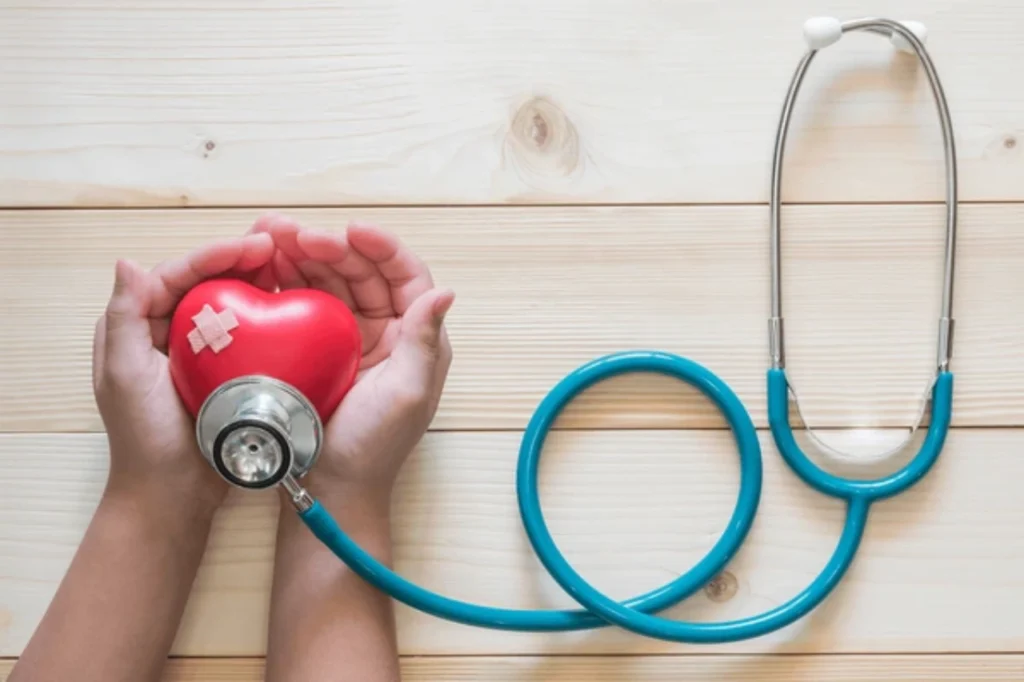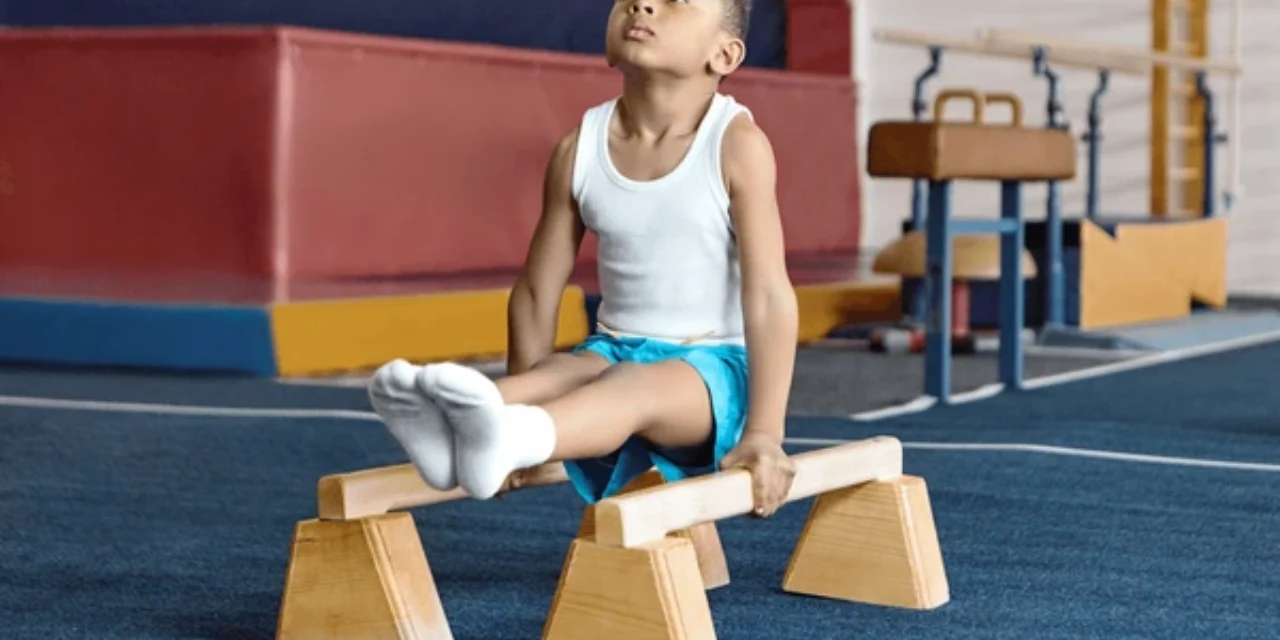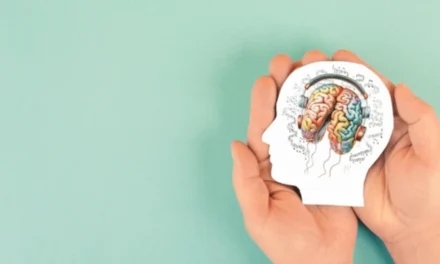Did you know that regular physical activity can burn up to 3,500 calories per week? That’s like losing 1 pound of body fat1. This shows how exercise can greatly impact weight management and health. It’s not just for staying fit; it’s key for overall growth and health.
Physical activity boosts heart health and mental well-being. It changes lives for the better.
The U.S. Department of Health and Human Services suggests 150 minutes of moderate aerobic activity or 75 minutes of vigorous aerobic activity weekly. They also recommend strength training twice a week for major muscle groups1. Following this can unlock seven key benefits for overall development:
Key Takeaways
- Regular physical activity can help prevent excess weight gain and manage chronic health conditions.
- Exercise stimulates brain chemicals that improve mood and reduce anxiety and depression.
- Physical activity boosts muscle strength, endurance, and cardiovascular health, leading to increased energy levels.
- Engaging in physical activity can enhance sleep quality and improve sex life.
- Exercise is a fun and social activity that can be enjoyed with friends and family.
Understanding Physical Activity and Its Role in Development
Physical activity is key for health and growth. It includes many types of movement that help people of all ages. From active play and sports for kids to aerobic and strength training for adults, it boosts the brain, improves thinking, and enhances health and happiness.2
Defining Physical Activity for Different Age Groups
For kids, it’s about playing actively, joining sports, and doing exercises that help with movement and balance2. Adults can get benefits from walking fast, cycling, or swimming. They also need exercises that make muscles stronger3.
The Science Behind Movement and Development
The science shows how important physical activity is for our bodies and minds. It makes the brain work better, improves thinking, and boosts overall health in all ages.2 It also lowers the risk of long-term diseases, strengthens the immune system, and helps sleep and energy better3.
Making physical activity a part of daily life can change lives, from childhood to adulthood. By knowing how movement affects development, we can help people live healthier, more active lives. This supports growth and strength in all stages of life23.
Weight Management Through Regular Movement
Keeping a healthy weight is more than just eating right. It’s also about moving your body regularly. Regular exercise helps by burning calories and speeding up your metabolism. The goal is to find the right mix of weight control, calorie burn, and consistent exercise.
The Centers for Disease Control and Prevention (CDC) say adults need 150 minutes of moderate activity weekly for health4. Or, they can do 75 minutes of vigorous activity each week4. Adults also need muscle-strengthening activity at least 2 days a week4. The more you move, the more calories you burn4.
But losing weight mainly comes from eating fewer calories. Regular exercise is key for keeping weight off4. How much activity you need to stay healthy varies by person4. To lose weight and keep it off, you need a lot of activity and eat fewer calories4.
| Activity | Intensity Level | Characteristics |
|---|---|---|
| Brisk Walking | Moderate | Noticeably faster breathing and heart rate, allowing for conversation4. |
| Running, Swimming Laps, Competitive Sports | Vigorous | Substantially increases heart rate and doesn’t permit conversation4. |
| Hiking, Dancing, Weightlifting, Basketball | Varies | The number of calories burned varies based on intensity and body weight4. |
Only about 30% of adult Americans say they get regular physical activity. But, the benefits of regular exercise are clear. People in the National Weight Control Registry who lost over 30 pounds and kept it off for a year burn about 400 calories a day through activity5.
So, a mix of weight control, calorie burn, and consistent exercise is essential for managing weight well. By adding regular physical activity to your daily life, you can move closer to a healthy weight456.
Boosting Cardiovascular Health and Endurance

Regular physical activity is key to better heart health and more endurance. It strengthens the heart and lungs. This reduces heart disease risk and more.
Impact on Heart Health
Exercise boosts heart health by raising good cholesterol and lowering bad fats7. This helps blood flow smoothly, lowering disease risks. It also makes the heart and lungs work better, boosting stamina8.
Being active helps prevent or manage stroke, metabolic syndrome, and high blood pressure.
Building Stamina and Endurance
Stamina and endurance are vital for health. Active kids and athletes use more oxygen per minute than others7. Regular aerobic exercise boosts endurance.
Studies show kids in school get better endurance with more physical education7. High-intensity interval training (HIIT) also boosts endurance by 38% to 79%7.
Adults should do at least 150 minutes of exercise weekly, as advised89. Mix aerobic, strength, and flexibility exercises for best results.
| Cardiovascular Endurance Levels | Oxygen Consumption (mL/kg/min) |
|---|---|
| Active Young People | 35-507 |
| Endurance Athletes | 70-857 |
| People with Stroke | 8-23 (can improve by 10-15% with exercise)7 |
Mental Health Benefits and Emotional Well-being
Regular physical activity greatly improves mental health and emotional well-being. Exercise boosts brain chemicals that make us feel better, reduce anxiety, and fight depression10. People who don’t exercise often get sick more and spend more on health care. But, regular activity improves how we see ourselves and our bodies10.
It also makes us feel more confident, smarter, and more self-assured10.
Physical activity is a natural way to handle stress and keep a positive view of life10. It helps control cravings and lessen symptoms of mental health issues10. Yoga is especially good for those with anxiety and depression, offering great benefits11.
Doing 150 minutes of exercise a week can cut down on chronic diseases by 20%-30%10. Exercise also boosts chemicals in our brain that make us feel good and lessens pain10. It also helps our immune system by balancing chemicals and reducing inflammation10.
Regular exercise also increases a brain chemical that might help fight Alzheimer’s disease10.
Physical activity is key for mental health, no matter how old you are11. Whether it’s walking fast, doing yoga, or lifting weights, moving more can greatly improve mental and emotional strength11.
| Physical Activity Guidelines | Recommended Levels |
|---|---|
| Moderate Activity | 150 minutes per week |
| Vigorous Activity | 75 minutes per week |
| Strength-building Exercises | 2 days per week |
People with mental health issues need to think about how exercise affects them, like how medicine or health problems might change things11. Working with doctors, everyone can find ways to move more and enjoy the mental and emotional benefits11.
“Any amount of physical activity is better than none.”
Enhanced Academic Performance in Children
Physical activity is key for kids’ learning and thinking skills. Studies have shown active kids do better in school. They focus better, solve problems easier, and think clearer12.
Research shows regular exercise boosts kids’ school grades. But, it’s hard to say exactly how much because studies vary12.
Physical Activity and Cognitive Function
A big study found exercise makes kids smarter. It showed a strong link between being fit and better thinking skills13.
Movement’s Impact on Learning Abilities
Adding more sports and dance in schools helps kids learn better. This is because exercise sharpens their minds and skills12.
But, many kids in Europe sit too much at school. They only get 16 minutes of active play each day12. Schools and communities need to make sure kids move more. They should have places for kids to be active and work with local groups to get kids moving14.
| Metric | Value |
|---|---|
| Percentage of young Europeans meeting WHO’s recommendation of 60 minutes of moderate-to-vigorous physical activity per day | 34% |
| Average time European pre-adolescent children spend in sedentary activities at school | 65% |
| Average time European pre-adolescent children spend in moderate-to-vigorous physical activity per school day | 16 minutes |
“Definitive conclusions regarding the impact of physical activity on academic achievement in children and adolescents have not been drawn yet.”
Even though more research is needed, the current evidence is clear. Exercise helps kids think better, learn more, and do well in school121314.
Building Stronger Bones and Muscles

Regular physical activity is key for strong bones and muscles. Weight-bearing and resistance training boost bone density and lower osteoporosis risk15. For kids, it’s crucial for bone growth, setting the stage for lifelong health.
Strength training builds muscle, boosts fitness, and makes daily tasks easier15. It stresses bones, making them denser and stronger over time15. Yet, swimming and cycling, while good for heart and muscles, don’t help bones much16.
- Walking, jogging, dancing, and tennis can stop bone loss and make bones stronger15.
- Strength training increases muscle and stresses bones, helping them grow15.
- Teenagers should do 20 to 30 minutes of weight-bearing exercise, 3 to 4 times a week, for strong bones15.
- Adults exercising can prevent bone loss, keep muscle, and lower fall risk15.
The type and intensity of exercise matter for bone and muscle strength16. Mixing weight-bearing and resistance training into your routine boosts bone strength and muscle development. This improves physical fitness and overall health.
Consistent, progressive exercise is vital for strong bones and muscles all life long. By focusing on bone strength and muscle development through physical fitness, you gain health benefits and a vibrant, active life17.
“Strength does not come from physical capacity. It comes from an indomitable will.”
– Mahatma Gandhi
Physical Activity and Disease Prevention
Regular physical activity is key in preventing chronic diseases. It lowers the risk of type 2 diabetes, some cancers, and arthritis18. Exercise also boosts the immune system, helping the body fight off infections and illnesses18. For kids, staying active helps them stay healthy for life, reducing the chance of chronic diseases later18.
Reducing Risk of Chronic Conditions
Chronic diseases are a big worry worldwide, causing more deaths than ever18. In 1990, they were behind 57% of global deaths, rising to 72% by 201618. The cost of heart disease, stroke, diabetes, breast cancer, and colon cancer was $54 billion in 201318. Physical inactivity costs $145 billion, linked to chronic diseases and early death18.
Low- and middle-income countries face a huge challenge, with four times the death rate from non-communicable diseases as high-income countries18. Ischemic heart disease and stroke caused 85% of cardiovascular disease deaths and 28% of all deaths in these nations18. Diabetes is expected to rise from 400 million to 600 million by 2035, mainly in low- to middle-income countries18.
Strengthening Immune System Response
Regular exercise boosts the immune system, helping fight infections and illnesses18. Adding physical activity to daily routines strengthens the immune system and lowers chronic disease risk18.
Being active is vital for preventing diseases and staying healthy long-term. Knowing the benefits of exercise helps people make choices for their well-being, reducing chronic disease burden19.
“Physical inactivity is a leading risk factor for global mortality and is estimated to cause millions of deaths per year.”19
Sleep Quality and Rest Enhancement
Physical activity can greatly improve sleep quality and rest20. It helps people fall asleep quicker and sleep more deeply. This leaves them feeling refreshed in the morning20. But, it’s best to avoid intense workouts before bed to avoid disrupting sleep20.
Some people find that exercise at any time can improve their sleep20. The most important thing is to enjoy the exercise. Whether it’s weightlifting or yoga, it should raise your heart rate and improve sleep20.
Good sleep is not just good for you; it’s also crucial for your health and mood. Studies show that being active can help you sleep better21. Regular, moderate exercise can make your sleep longer and better, especially for teens21.
| Sleep Improvement Metrics | Physical Activity Benefits |
|---|---|
| Sleep Duration | Regular, moderate exercise can extend sleep duration21 |
| Sleep Quality | Moderate exercise training can improve sleep quality21 |
| Sleep Onset | Regular exercise can decrease sleep onset21 |
| Insomnia Symptoms | Moderate resistance training and stretching exercises can benefit people with insomnia21 |
Adding regular physical activity to your life can greatly improve your sleep21. Understanding how exercise affects sleep can help you make better choices. This can lead to a better life and more benefits from good sleep202221.
Social Development Through Active Play
Physical activity and active play are key for kids’ social growth23. Playing team sports or group games boosts communication, teamwork, and social skills23. These activities teach kids how to work together, play fairly, and solve problems23.
Building Communication Skills
Active play helps kids talk and listen better as they play with others23. Through games and sports, they learn to share ideas, listen, and find solutions together23.
Developing Team Cooperation
Playing in groups, like team sports, teaches kids to work together23. They learn to share, take turns, and support each other, gaining important social skills23.
Adults can also gain from group activities like exercise classes or sports24. These activities help build community and support networks24. They offer a chance to meet others with similar interests, improving well-being and social skills24.
| Benefit | Impact |
|---|---|
| Communication Skills | Verbal and nonverbal communication, expressing ideas, listening to others, negotiating solutions |
| Team Cooperation | Sharing, taking turns, supporting one another, working towards a common goal |
| Social Connections | Sense of community, engagement with like-minded individuals, enhanced well-being |
In conclusion, active play and physical activities are vital for kids’ social growth2324. They help build communication, teamwork, and social connections2324. By participating, kids gain the skills and confidence to interact well in the world2324.
Energy Levels and Daily Performance
Regular physical activity boosts energy levels and improves daily performance25. Just 30 minutes of moderate exercise each day can be very beneficial25. It helps the body get more oxygen and nutrients, making you feel more energetic for daily tasks25.
Research shows that exercise, whether it’s a long session or short bursts, increases energy and vigor25. Short exercise sessions can even improve mood and reduce cravings for unhealthy foods25.
It’s crucial to stay active, especially in the workplace, where activity levels are dropping25. Office workers spend most of their time sitting, and activity levels have fallen by 20% since 196025.
Exercise has proven benefits for energy and performance. A review of 81 studies found that exercise reduces fatigue and boosts energy and vitality26. The type and duration of exercise, along with the person’s health, affect these outcomes26.
Physical activity is most important for adults of reproductive age, as it depends on muscle mass, not body fat27. This highlights the need for an active lifestyle to maintain energy and performance27.
Adding regular physical activity to your daily routine can greatly improve energy and performance25. It boosts productivity and well-being, and is key for long-term health25.
Stress Management and Anxiety Reduction
Physical activity is a great way to reduce stress and anxiety. It boosts the production of endorphins, which make us feel better28. The Anxiety and Depression Association of America (ADAA) says seven out of ten adults in the U.S. deal with stress or anxiety every day28. Exercise helps build emotional strength, making it easier to handle life’s ups and downs.
Exercise as a Natural Stress Reliever
Exercise is a healthy way to release tension and negative feelings. It improves our mental health and helps us stay emotionally balanced28. A poll by the ADAA found 14% of people use exercise to manage stress. They like walking, running, and yoga28. Even just five minutes of aerobic exercise can help reduce anxiety28.
Building Emotional Resilience
Regular physical activity is key for managing stress29. The Department of Health and Human Services suggests 150 minutes of moderate aerobic activity or 75 minutes of vigorous activity weekly. They also recommend strength training exercises at least twice a week29. This routine boosts self-confidence, improves mood, and reduces mild depression and anxiety symptoms29.
Creating a regular exercise habit can also improve sleep, which stress, depression, and anxiety often disrupt29. By adding physical activity to their daily routine, people can build the emotional strength needed to face life’s challenges30.
While exercise is a powerful tool for managing stress and anxiety, it may not work for everyone30. For some, it might not significantly improve their mental health in the long run30. But, setting small goals, finding fun activities, and gradually building a routine can help build emotional resilience30.
“Regular participation in aerobic exercise has been shown to decrease overall levels of tension, elevate and stabilize mood, improve sleep, and improve self-esteem.”28
Long-term Health Benefits for Children
Regular physical activity in childhood offers many lifelong health benefits. It helps with proper physical growth, lowers the risk of chronic diseases later, and builds healthy habits. Active kids tend to stay healthy, have stronger bones and muscles, and better heart health as adults. These advantages lead to a better life and longer life expectancy.
Research shows that only about 1 in 4 kids aged 5 to 14 meet daily physical activity goals.31 To support their growth, kids aged 5 to 12 should not spend more than 2 hours a day on screens for fun. Kids aged 2 to 5 should limit screen time to 1 hour a day.31 Also, children under 2 should have no screen time at all.31
The long-term gains of childhood physical activity are significant. It can cut the risk of early death by up to 30%.32 Adults should aim for at least 150 minutes of physical activity weekly.32 Many adults sit for over 7 hours a day, and those over 65 often sit or lie down for 10 hours or more.32 Sitting too much can raise the risk of heart disease, stroke, and type 2 diabetes.32 Activities that are vigorous can offer more health benefits than moderate ones32.
Teaching kids the value of physical activity can lead to a healthier life. It supports their physical growth, lowers disease risk, and builds lasting habits. Investing in our children’s health today will benefit them for years to come.
Creating Healthy Habits Early in Life
Starting healthy habits in childhood is key for a lifetime of wellness. Research shows that making healthy choices can lower the risk of many health issues. By encouraging regular exercise and family activities, parents can instill lasting positive behaviors in their kids.
Establishing Routine Exercise Patterns
Being consistent is crucial for developing good exercise habits. People who lost weight and kept it off often tracked their progress closely. Activities like bike rides and sports games can make exercise fun and create lasting habits for kids.
Family Involvement in Physical Activities
Studies show that family and friends influence our health habits. Doing physical activities together helps create a supportive environment. Even small improvements in diet and exercise can greatly reduce health risks and increase life expectancy.
| Stage | Description | Benefits | Roadblocks | Overcoming Roadblocks |
|---|---|---|---|---|
| Contemplation | Considering making changes | N/A | N/A | N/A |
| Preparation | Getting ready to make changes | N/A | N/A | N/A |
| Action | Making changes in the last 6 months | |||
| Maintenance | Kept up changes for over 6 months |
“Healthy eating habits established in childhood lead to long-term healthy behavior in adulthood.”34
By starting healthy habits early, families can set their children up for a better future. Regular exercise and family activities help kids develop good habits. This lays the groundwork for a healthier, more active life353334.
Improving Self-confidence and Body Image
Regular physical activity boosts self-confidence and improves body image. As people engage in physical activity, they feel better about their looks and abilities. This positive change goes beyond how they see their bodies, helping them feel more confident in all areas of life. For kids and teens, being active is key to a healthy body image and self-view36.
Body image issues can lead to unhealthy behaviors like eating disorders37. But, exercise can help improve mental health and how we see our bodies37. Just 30 minutes of exercise can make women feel better about their bodies for at least 20 minutes after37.
Exercise boosts feelings of strength and empowerment, making us think more positively about our bodies37. Regular physical activity can make us more confident and accepting of ourselves, leading to a better overall well-being.
A study with 341 older rural women showed big improvements in body image and self-confidence after joining the Strong Women Program (SWP)36. The SWP was a 60-minute session twice a week, covering warm-up, strength training, balance, and cool-down36. It was held at 14 sites across 9 counties in Montana, with about 32 women per county36.
The study used the Multidimensional Body-Self Relations Questionnaire (MBSRQ) to show how physical activity can positively change how we see our bodies and ourselves36. It also found that participants were much happier with their physical activity levels, boosting their self-confidence and body image even more36.
By making physical activity a regular part of their lives, people can experience the powerful benefits of improved self-confidence and body image. This leads to a more positive and fulfilling life.
Recommended Activity Guidelines for Optimal Development
The U.S. Department of Health and Human Services has set physical activity guidelines38. Adults should do at least 150 minutes of moderate aerobic activity or 75 minutes of vigorous aerobic activity weekly. They should also do strength training exercises for all major muscle groups at least twice a week38.
For kids and teens aged 5-17, it’s recommended to do at least 60 minutes of moderate- to vigorous-intensity physical activity daily. This should include vigorous-intensity aerobic activities, muscle-strengthening activities, and bone-strengthening activities at least 3 days a week38.
The World Health Organization (WHO) recently updated its global recommendations on physical activity and sedentary behavior39. They provided expert advice on the optimal amounts and intensities of physical activity for different populations39. The 2020 Guidelines highlighted the importance of physical activity in promoting overall health and development, especially for children and adolescents39.
They emphasized the need for more research to address gaps in understanding the optimal dose-response relationship between physical activity, sedentary behavior, and health outcomes across various life stages39.
Following these guidelines can lead to significant improvements in cardiorespiratory fitness, musculoskeletal fitness, and cardiometabolic health outcomes for children and adolescents38. Regular physical activity is also linked to enhanced cognitive function, academic performance, and mental well-being in this age group38.
By incorporating these evidence-based guidelines into daily routines, families can support the overall development and long-term health of their children3839.,
FAQ
What are the key benefits of physical activity for overall development?
How does physical activity benefit different age groups?
How does physical activity aid in weight management?
How does physical activity improve cardiovascular health?
What are the mental health benefits of physical activity?
How does physical activity impact academic performance in children?
What are the physical benefits of regular physical activity?
How does physical activity prevent chronic diseases?
How does physical activity impact sleep quality?
What are the social benefits of physical activity?
How does physical activity boost energy levels and daily performance?
How does physical activity help manage stress and anxiety?
What are the long-term health benefits of physical activity for children?
How can parents encourage healthy exercise habits in their children?
How does physical activity improve self-confidence and body image?
What are the recommended physical activity guidelines for optimal development?
Source Links
- 7 great reasons why exercise matters
- Physical Activity, Fitness, and Physical Education: Effects on Academic Performance – Educating the Student Body
- Physical activity
- Physical Activity and Your Weight and Health
- Physical Activity
- Role of Physical Activity for Weight Loss and Weight Maintenance
- How To Improve Cardiovascular Endurance
- What Is Cardiovascular Endurance?
- 3 Kinds of Exercise That Boost Heart Health
- Role of Physical Activity on Mental Health and Well-Being: A Review
- Physical activity and mental health
- Physical Activity and Academic Achievement: An Umbrella Review
- Frontiers | Children’s Physical Activity, Academic Performance, and Cognitive Functioning: A Systematic Review and Meta-Analysis
- WHO reviews effect of physical activity on enhancing academic achievement at school
- Exercise and Bone Health – OrthoInfo – AAOS
- Exercise for bone health
- How Exercise Can Help You Build Better Bones
- Physical activity, exercise, and chronic diseases: A brief review
- Physical Activity Fundamental To Preventing Disease
- Exercising for Better Sleep
- Physical Activity and Sleep
- The bidirectional relationship between exercise and sleep: Implications for exercise adherence and sleep improvement
- Emotional Health Through Active Play
- The role of physical activity promoting thinking skills and emotional behavior of preschool children
- Effect of frequent interruptions of prolonged sitting on self-perceived levels of energy, mood, food cravings and cognitive function – International Journal of Behavioral Nutrition and Physical Activity
- The Effect of Chronic Exercise on Energy and Fatigue States: A Systematic Review and Meta-Analysis of Randomized Trials
- Daily physical activity as determined by age, body mass and energy balance
- Physical Activity Reduces Stress | Anxiety and Depression Association of America, ADAA
- Exercise and stress: Get moving to manage stress
- Exercise for Stress and Anxiety
- Benefits of physical activity for children
- Benefits of exercise
- Changing Your Habits for Better Health – NIDDK
- Diet and exercise for kids: Tips for acting boldly to create change
- Creating Healthy Habits
- Strength Training Improves Body Image and Physical Activity Behaviors Among Midlife and Older Rural Women
- How can exercise improve body image?
- RECOMMENDATIONS – WHO Guidelines on Physical Activity and Sedentary Behaviour
- Advancing the global physical activity agenda: recommendations for future research by the 2020 WHO physical activity and sedentary behavior guidelines development group – International Journal of Behavioral Nutrition and Physical Activity





